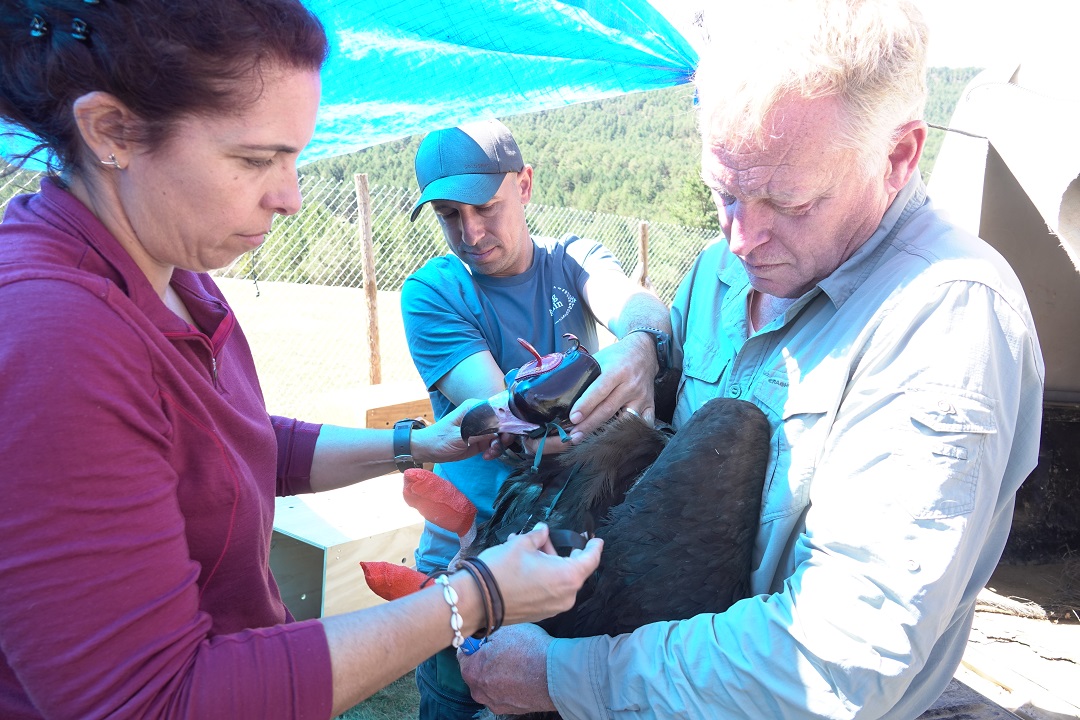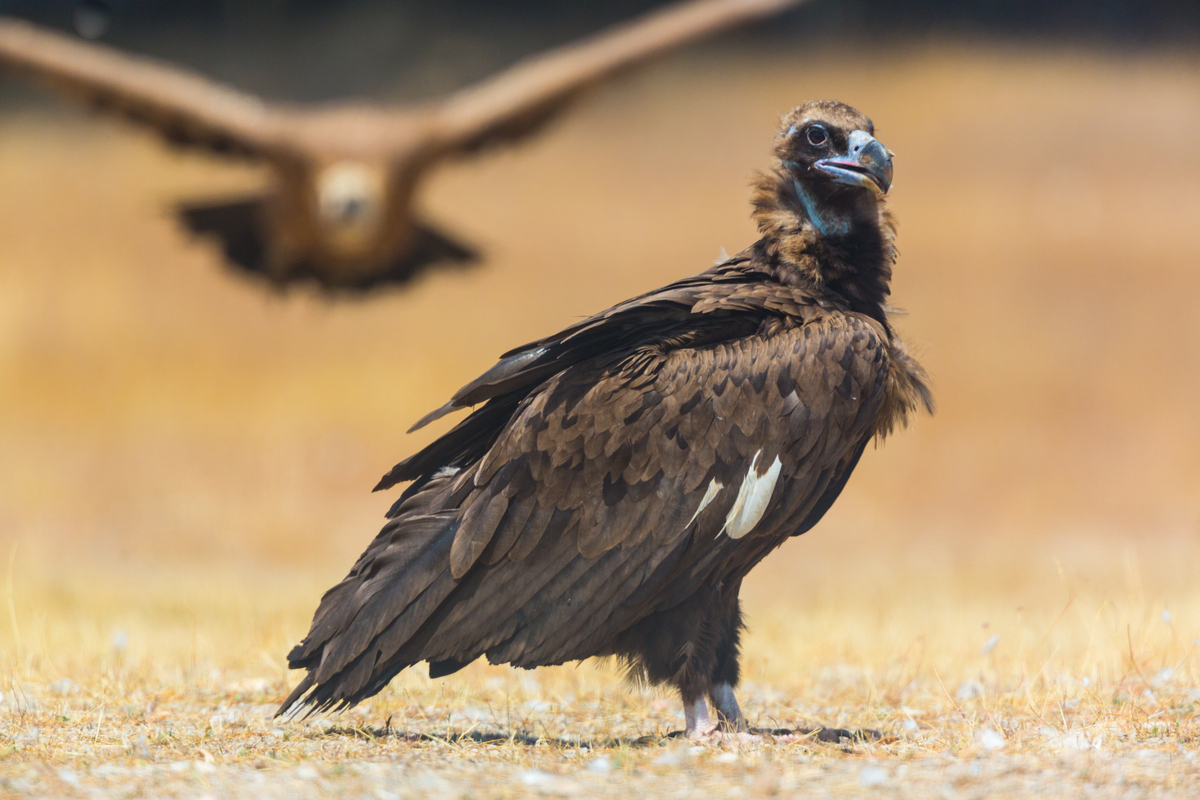The Cinereous vulture (Aegypius monachus) is the largest scavenger bird inhabiting Spain and its imposing silhouette was common in the Iberian Highlands until a century ago, when the last resident colonies disappeared as the forest masses in the territory also diminished.
A reintroduction project promoted by the Castilla-La Mancha regional government and Alto Tajo Nature Park, and developed by the Terra Naturalis association and Rewilding Spain, is working to bring the black vulture back to this landscape. Seven black vultures have recently been released as part of this programme after spending seven months in an acclimatisation aviary and they are now familiarising themselves with their new habitat.

The released birds came from El Campillo wildlife recovery centre located in Ciudad Real (Castilla-La Mancha region), where they had arrived due to dehydration or disease. Once physically recovered, these scavenger birds spent seven months adapting to the new landscape and were fitted with GPS transmitters before their release, so that their movements can be monitored.

This latest release is a new step in the reintroduction programme, which has previously released further 10 specimens since its launch in 2020. The monitoring of the birds shows that most of them continue to move mainly through Iberian Highlands, despite having travelled to very distant places throughout a large part of Spain.
“We expect to release between 40 and 50 black vultures in the area with the aim of getting them to settle in this landscape. Young vultures, like those released so far, take about four years to start breeding and we hope that when they start to do so, as well as a sign of success in settlement, they will also attract other dispersing birds flying around,” explains Jorge Layna, from Terra Naturalis, who is the biologist responsible for this reintroduction project.
In order to facilitate their settlement, the programme manages six feeding points spread throughout the Upper Tagus (Alto Tajo) and Cuenca Mountains (Serranía de Cuenca) areas. In addition, there are 16 nesting platforms placed on trees. Two of them are equipped with visual lures.
Unlike the griffon vulture (Gyps fulvus), which prefers rocky areas, the black vulture nests on the treetops, making it a species that is very sensitive to forest deterioration. Currently, the protection status of the forests in Upper Tagus and Cuenca Mountain makes these areas can provide the necessary conditions for the return of this necrophagous bird, whose feeding habits perfectly complement those of the griffons.

Black vultures prefer smaller carrion carcasses and other leftovers that griffon vultures don’t eat. For this reason, the joint activity of both species optimises their ability to act as “nature’s clean up crew”, preventing the spread of disease.
The creation of new breeding colonies of black vultures in the Iberian Highlands is key to the conservation of the species, which is considered endangered both in Castilla-La Mancha region, where there are 508 registered pairs, and in Spain as a whole. Despite the number of black vultures has been growing gradually for several decades, the population continues to be highly concentrated in a small number of colonies. In Castilla-La Mancha, these colonies are located in Cabañeros and Valle de Alcudia, far away from Iberian Highlands. This represents a serious risk for the species, since in the event of a problem in any of the colonies, such as diseases or wildfires, this would affect a large number of specimens and, therefore, the species as a whole.
Enhancing the natural values of the landscape and ecotourism
The settlement of the black vulture in Iberian Highlands would bring this landscape closer to the goal of recovering the four vulture species that once lived in the area as stablished inhabitants. Relevant populations of griffon vulture and Egyptian vulture (Neophron percnopterus) already live in the landscape. In addition, Rewilding Spain is also working together with Terra Naturalis and the regional government and the Alto Tajo Nature Park on the natural recolonisation of the bearded vulture (Gypaetus barbatus).
“Having cinereous vultures and bearded vultures in the landscape will be an important step towards consolidating the role of scavengers in the food chain, because diversifying this ecological function among the various species that can perform it increases the certainty that this role will be properly developed,” states Pablo Schapira, Rewilding Spain Team Leader. Furthermore, “these two species once inhabited the Iberian Highlands. Recovering them will enhance the great value of the landscape natural resources, will be an attraction for many nature lovers and will help to boost ecotourism”, he added.
Rewilding Spain’s participation in the Cinereous vulture reintroduction programme is part of the Iberian Highlands rewilding initiative and is carried out in partnership with Rewilding Europe, and with the financial support of the Endangered Landscapes Programme and the Cartier for Nature Foundation.
